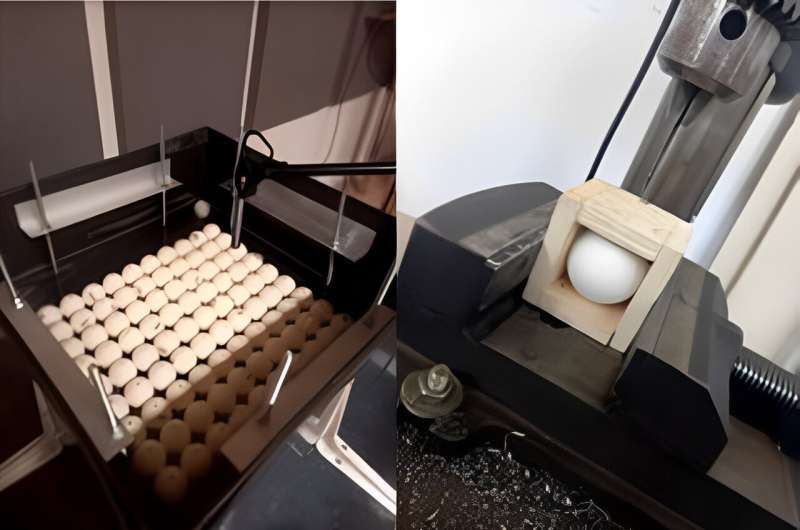This article has been reviewed according to Science X's editorial process and policies. Editors have highlighted the following attributes while ensuring the content's credibility:
fact-checked
peer-reviewed publication
trusted source
proofread
Ping-pong balls as sound absorbers for low-frequency noise

Long-term exposure to low-frequency noise can cause numerous health problems, but the solution may be found in an unexpected object, a ping-pong ball. Conventionally thought of as the hollow plastic balls that speed through the air during a fast-tempo game of table tennis, with a few modifications, ping-pong balls can help absorb the city din.
Low-frequency noise is ubiquitous in cities, near roads, and by airports. Though potentially heard as background in the acoustic landscape, it can trigger earaches, respiratory impairment, irritability, and other long-term adverse effects. Because it is produced by a range of sources and is less affected by structures than higher-frequency sound, low-frequency noise can be challenging to avoid.
Researchers from the University of Lille and the National Technical University of Athens describe an acoustic metasurface that uses ping-pong balls as Helmholtz resonators to create inexpensive but effective low-frequency sound insulation.
The study titled, "Low frequency sound isolation by a metasurface of Helmholtz ping-pong ball resonators," appeared in Journal of Applied Physics.
"Ping-pong balls are well-known, everyday objects, present in large numbers all over the world," said author Robine Sabat. "Our motivation was to use these easily accessible objects to create a low-frequency insulating panel structure. Ping-pong balls therefore present an economical alternative to acoustic insulators for both low cost and potential recycling."
Acoustic metasurfaces are materials specially engineered to manipulate sound waves. This metasurface uses hollow ping-pong balls with small holes punctured in each, modeling Helmholtz resonators.
"The Helmholtz resonator has the unique ability to capture ambient sound waves precisely at its natural frequency and can be represented as cavities connected to their environment via a narrow neck," Sabat said. "The originality of the work was to consider the effect of the coupling between two resonators, leading to the occurrence of two resonance frequencies."
More resonant frequencies meant the device was able to absorb more sound. At the success of two coupled resonators, the researchers added more, until their device resembled a square sheet of punctured ping-pong balls, multiplying the number of resonant frequencies that could be absorbed.
By adjusting the number of balls, number of holes, and hole size, the researchers could change the metasurface's acoustic properties, proving it is possible to design a sound absorption panel without expensive materials.
"The potential of this metasurface extends beyond sound insulation," said Sabat. "It can be broadened to achieve various functions similar to other metasurfaces. These functionalities encompass sound focusing, unconventional sound reflection, sound transmission manipulation, and more."
More information: Robine Sabat et al, Low frequency sound isolation by a metasurface of Helmholtz ping-pong ball resonators, Journal of Applied Physics (2023). DOI: 10.1063/5.0160267


















